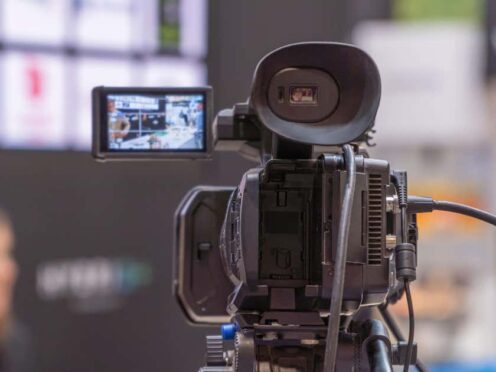The pre-election period is a busy time for broadcasters as they join parliamentary candidates on the campaign trail. But there are strict restrictions on what they can broadcast during election day itself.
Ofcom – which regulates broadcasters in the UK – says “discussion and analysis of election and referendum issues must finish when the poll opens” in its election guidance.
This means they cannot broadcast any political speeches or interviews from 7am to 10pm.
Campaigning is still allowed on election day, but it cannot be transmitted on TV or radio. Any TV or radio speeches posted to social media are likely to have taken place beforehand.
Broadcasters are allowed to report on the more procedural aspects of the day – and party leaders and politicians are often filmed going to vote at their polling station.
– Can I trust new polling figures?
Ofcom’s guidance also says “broadcasters may not publish the results of any opinion poll on polling day itself until the election or referendum poll closes”.
The first new set of polling results on election day is the exit poll, which comes out when voting booths close at 10pm.
It is a criminal offence to publish an exit poll or survey when polls are open – meaning any new polling data published on social media will not be trustworthy.
– Do these rules apply to print journalism?
Newspapers and magazines are governed by a different set of rules, and are allowed to publish discussions of policy and political issues during election day. Many newspapers actively endorse certain candidates in their editorial sections.
Most newspapers will have gone to print the night before, so will not be printing new information while polling stations are open. However, they can still publish stories online.
– What about social media?
There are no specific rules about what can be published on social media on election day, so you may still see campaign material on your feeds.
An exception to this is the BBC. Its editorial guidelines state it will not be publishing campaign material across any platform, including its social media accounts.
Relative freedom for digital and print news means TV and radio are unique in having restrictions placed on them during election day. Some have called for the rules on broadcasting to be updated, in order to counter disinformation spreading online.
Links
Ofcom election guidance (archived)
Electoral Commission blog on campaign materials (archived)
Boris Johnson votes in 2019, YouTube
Jeremy Corbyn votes in 2019, YouTube (archived)
Representation of the People Act 1983 (archived)
IPSO blog on election reporting (archived)
BBC editorial guidelines for 2024 general election (archived)
